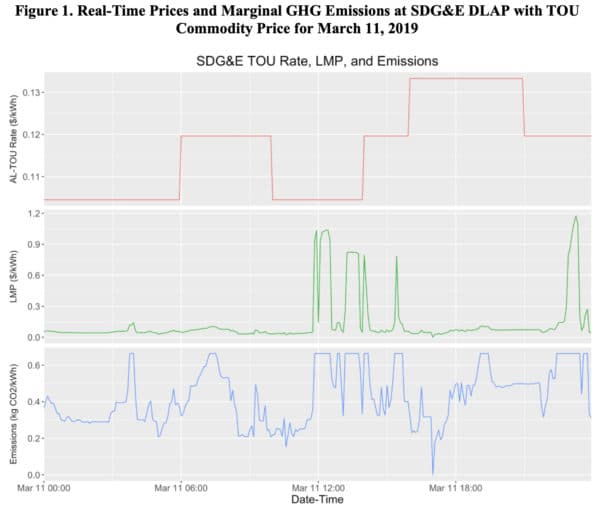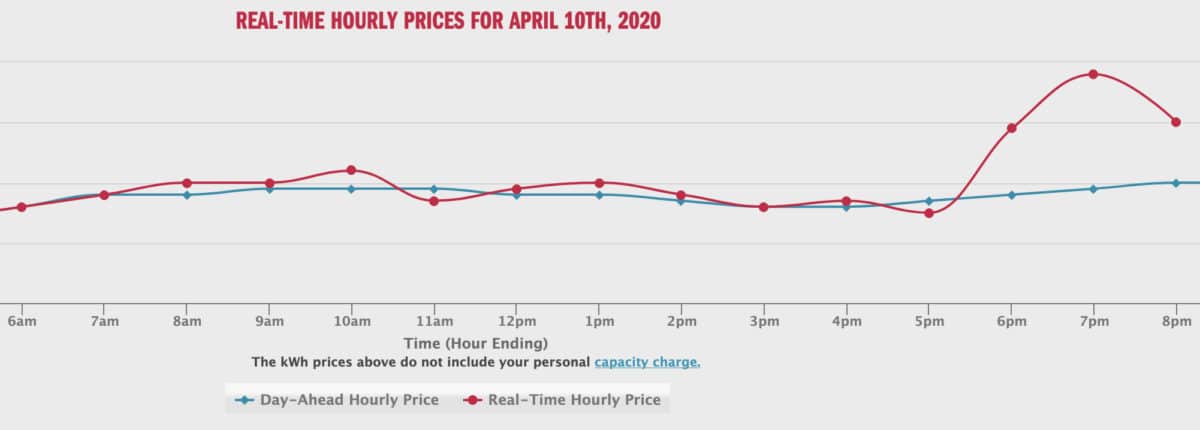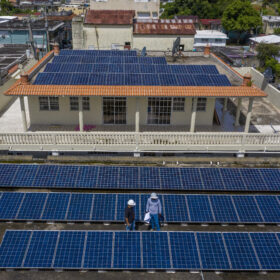With an increasing level of variable renewable generation, California will need “more short-term load flexibility”—and real-time pricing of electricity can provide that flexibility, testified Scott Murtishaw, senior advisor for regulatory affairs at the California Solar and Storage Association (CALSSA), in a utility rate case last week.
Murtishaw pointed to Oklahoma Gas & Electric, which offers a variable pricing program used by one-sixth of the utility’s residential customers, many of whom use networked thermostats. On average these customers save $150 per year, he said. In Illinois, he added, ComEd estimates that residential customers participating in its real-time pricing program save about 15% on their electric bills.
“As the costs of storage and automated demand response technologies decline, more customers will have the ability to shift loads over short time horizons in response to granular price signals,” he said.
CALSSA, the California Energy Storage Alliance and service provider OhmConnect jointly sponsored the testimony, asking California regulators to require San Diego Gas & Electric (SDG&E) to offer real-time pricing as an option for all customer classes.
In terms of mechanics, OhmConnect senior market analyst Maria Belenky called for SDG&E to “implement a core set of real-time pricing capabilities,” while third parties should be permitted to offer “more comprehensive energy management services.” That approach would “minimize the financial impact on ratepayers,” she said, while “maximizing the opportunity for new and innovative approaches to improve customer response to real-time price signals.”
In competitive retail choice states like Texas, Belenky noted, “there is an established ecosystem of billing system vendors who service retail electricity providers.”
Time-of-use vs. real-time
Real-time pricing would be similar to the “Schedule VGI” pricing that SDG&E currently offers for separately-metered electric vehicle charging, Murtishaw said.
In contrast, time-of-use prices offered by SDG&E “offer a very blunt signal compared to prices observed in the wholesale market,” he said, and “capture only a fraction of the potential economic efficiencies provided by real-time pricing.”
“The increased savings opportunities” of real-time pricing compared to time-of-use rates “will promote adoption of energy storage, electric vehicles, and automated demand response,” he said.
Murtishaw included the following image in his testimony, noting that “on this particular day,” the time of use rates, shown at the top, were at their lowest mid-day when wholesale locational marginal prices ranged up to 75 cents per kWh, as shown in the middle. Yet peaks in greenhouse gas emissions, shown at the bottom, did match several peaks in wholesale prices, he noted, showing that real-time pricing, by reducing consumption during peak intervals, would also reduce greenhouse gas emissions.

For comparison, ComEd’s real-time hourly prices for a recent weekday are shown in the image at the top of this story; ComEd averages five-minute prices across each hour because its residential meters are programmed to record hourly usage. The blue line in that image is the day-ahead hourly price, and the red line is the real-time hourly price.
Because five-minute pricing can incentivize customers to adjust consumption with extra precision, Murtishaw said that all SDG&E customers should be allowed to opt for five-minute pricing, while compensating the utility “for the reasonable cost of reprogramming the meter and managing the larger billing data sets.”
More broadly, to ensure that real-time pricing (RTP) participants cover their cost of service, the three organizations sponsoring the testimony “have tried to construct an RTP tariff that aligns participants private costs with grid costs as much as possible,” Murtishaw said. “Bill savings that RTP customers achieve through load reducing or load shifting actions would be based directly on avoided wholesale energy costs and avoided capacity costs.”
Previous petition punted
Previously, the California Public Utilities Commission (CPUC) had punted on a petition from solar and storage groups for a statewide rulemaking on real-time and other dynamic pricing options, saying that the issue would be better addressed in individual utility rate cases, according to CALSSA Policy Director Brad Heavner. That petition had been submitted by CALSSA, the California Energy Storage Association, Enel X, Engie Services, Engie Storage, OhmConnect, the Solar Energy Industries Association, and Stem.
The CPUC determined in the SDG&E rate proceeding that real-time pricing or other dynamic pricing rate options were within the scope of the proceeding, according to the joint testimony submitted by solar and storage advocates last week.
The CPUC expects to issue a proposed decision in the SDG&E case in November, for a vote in December 2020. Documents filed in the proceeding are available at the CPUC’s proceeding search site under case A1903002.
This content is protected by copyright and may not be reused. If you want to cooperate with us and would like to reuse some of our content, please contact: editors@pv-magazine.com.







““As the costs of storage and automated demand response technologies decline, more customers will have the ability to shift loads over short time horizons in response to granular price signals,” he said.””
As prices drop on solar PV, and now we are seeing some efficiency bumps in solar PV mono crystalline panel outputs into the 23% to 24% efficiency range. Tandem solar PV cells with possible efficiencies of 30% perhaps 35% would make solar PV at least 10% more efficient than any fueled generation resource end to end. Prices coming down, more folks will install larger solar PV arrays on their homes. With smart ESS, the “real time” market could allow larger energy storage to the point of using the grid as a back up, the solar PV and ESS as the primary home power supply.